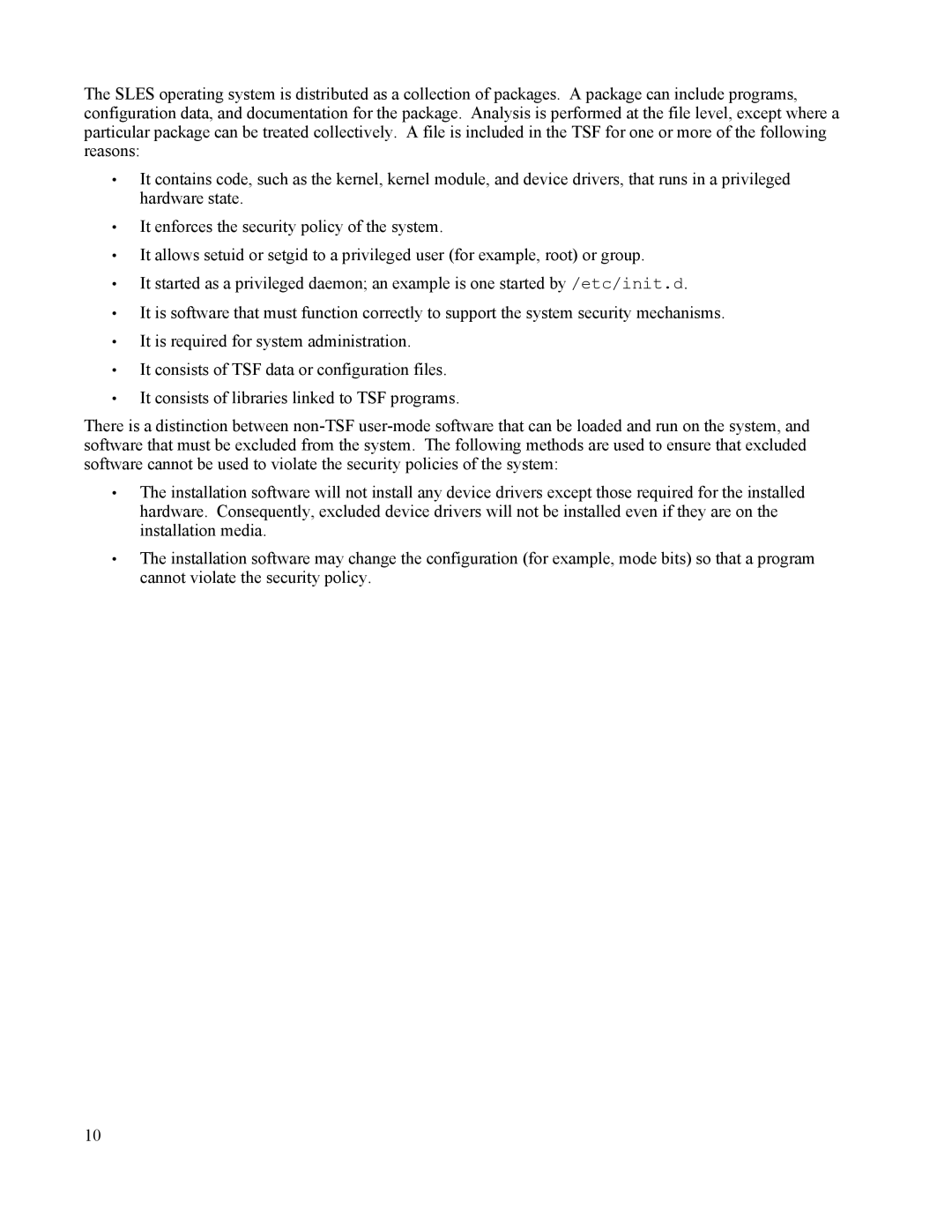The SLES operating system is distributed as a collection of packages. A package can include programs, configuration data, and documentation for the package. Analysis is performed at the file level, except where a particular package can be treated collectively. A file is included in the TSF for one or more of the following reasons:
•It contains code, such as the kernel, kernel module, and device drivers, that runs in a privileged hardware state.
•It enforces the security policy of the system.
•It allows setuid or setgid to a privileged user (for example, root) or group.
•It started as a privileged daemon; an example is one started by /etc/init.d.
•It is software that must function correctly to support the system security mechanisms.
•It is required for system administration.
•It consists of TSF data or configuration files.
•It consists of libraries linked to TSF programs.
There is a distinction between
•The installation software will not install any device drivers except those required for the installed hardware. Consequently, excluded device drivers will not be installed even if they are on the installation media.
•The installation software may change the configuration (for example, mode bits) so that a program cannot violate the security policy.
10
